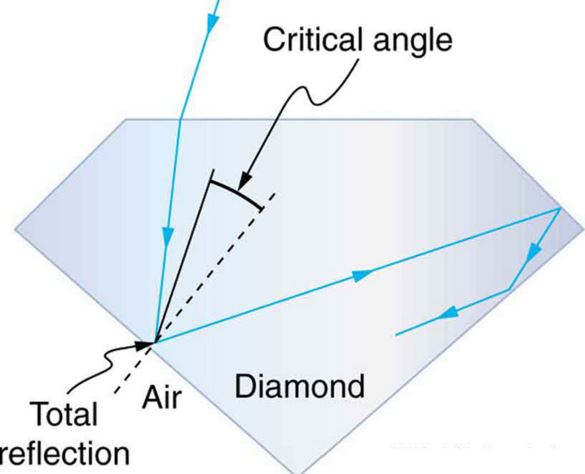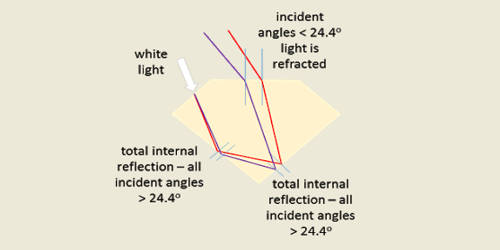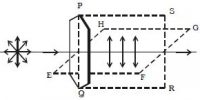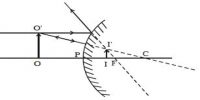Diamond Total internal reflection is the main cause of the brilliance of the diamond. The refractive index of diamond with respect to air is 2.42. Its critical angle is 24.41°. When light enters a diamond from any face at an angle greater than 24.41° it undergoes total internal reflection. Light is traveling more slowly in the first medium than the second medium. By cutting the diamond suitably, multiple internal reflections can be made to occur. This means that the first medium has the largest index of refraction.

When light passes from one medium into a second, less dense medium, the light bends away from the normal. If the angle of incidence is increased beyond the critical angle, the light rays will be totally reflected back into the incident medium. This effect is called total internal reflection. At a particular incident angle, the angle of refraction will be 90 degrees, and the refracted ray would travel along the boundary between the two media. Total internal reflection occurs when the critical angle is increased such that the light is reflected back into the same medium and is not refracted out into the other medium. Total internal reflection occurs when the angle of incidence is equal to or greater than the critical angle.
A good example of total internal reflection is a diamond. Diamonds achieve their brilliance partially from total internal reflection. Diamond has the highest index of refraction but can increase the amount of total internal reflection by being cut properly making diamond sparkle. Because diamonds have a high index of refraction (about 2.3), the critical angle for the total internal reflection is only about 25 degrees. After many such reflections, the colors in the light are separated and seen individually. The diamond is cut suitably so that the light entering the diamond from any face incident at an angle greater than its critical angle and suffers multiple total internal reflections at various surfaces.















